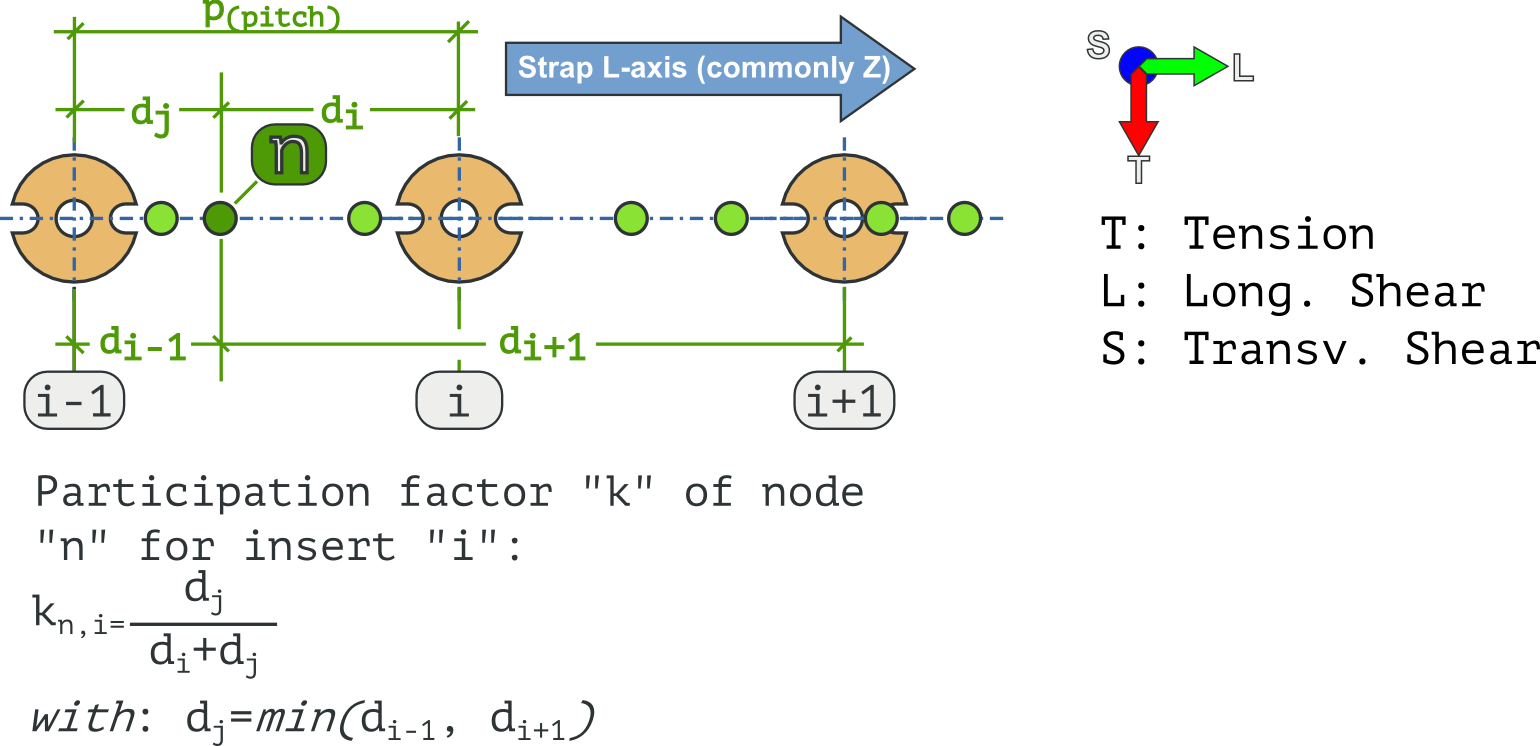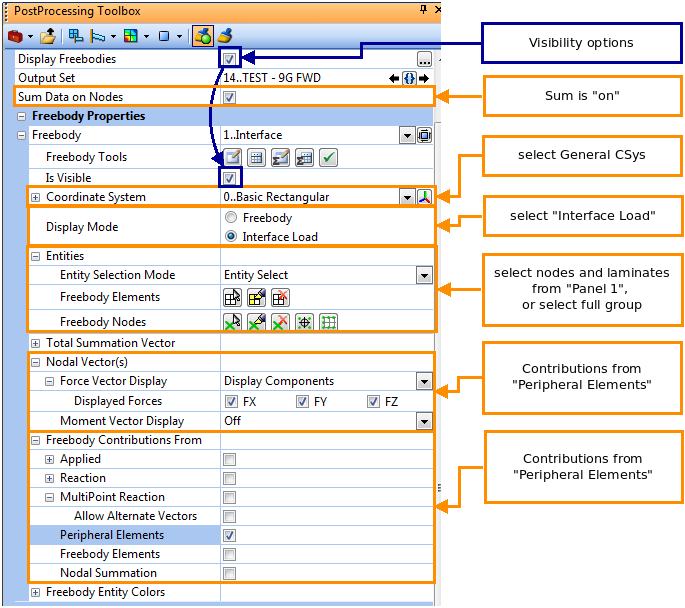Matricial Pinned Joints¶
Introduction¶
The Matricial pinned joints processes pinned joints by checking nodes loads against fixed location for pins. This is very different from the sliding *method, where no assumptions on the pin location is done.
Method¶
For each joint, a “n x m” matrix is built where n is the number of nodes involved in the joint, and m the number of pins. This sparse matrix defines a node vs. pin participation factor for each node.
This participation factor is based on the relative distances between the two closest fixations:

Participation factor
Allowable¶
The allowable are extracted from Carnac database. The tricky part is to “fill the gaps”. To do it, nasca will base its search on the following panels properties:
- A, B
- respective reference (e.g. NB220-0155-500) for panels A and B.
- thkA, thkB
- respective thickness for panels A and B.
- manA, manB
- respective manufacturer (e.g. Nordam, JCB, etc.) for panels A and B.
- typeA, typeB
- respective type (e.g. epoxy, alu, phenolic, etc.) for panels A and B.
Nasca will search for an allowable in the following order:
- search allowable for A / B
- search for critical values for the pair: A / [typeB, manB, thkB] and [typeA, manA, thkA] / B.
- search for critical values for the pair: A / [typeB, manB] and [typeA, manA] / B.
Example¶
We need an allowable for the following pair: “jcb-ep-216-115-500”, “nb220-0155-375”,
- First try:
search for “A=jcb-ep-216-115-500 B=nb220-0155-375 shape=L pitch=4” returns nothing
- Second try:
search “A=jcb-ep-216-115-500 manB=nordam thkB=0.375 typeB=epoxy shape=L pitch=4” returns nothing search “manA=jcb thkA=0.5 typeA=epoxy B=nb220-0155-375 shape=L pitch=4” returns nothing
- Third try:
search “A=jcb-ep-216-115-500 manB=nordam typeB=epoxy shape=L pitch=4” returns:
| shape | pitch | vector | ab | value | unit | A | B | manA | manB | thkA | thkB | typeA | typeB | unit_from |
|---|---|---|---|---|---|---|---|---|---|---|---|---|---|---|
| L | 4 | L | A | 617 | lbf | jcb-ep-216-115-500 | nb220-0155-750 | jcb | nordam | 0.5 | 0.75 | epoxy | epoxy | lbf |
| L | 4 | S | A | 342 | lbf | jcb-ep-216-115-500 | nb220-0155-500 | jcb | nordam | 0.5 | 0.50 | epoxy | epoxy | lbf |
| L | 4 | T | A | 414 | lbf | jcb-ep-216-115-500 | nb220-0155-500 | jcb | nordam | 0.5 | 0.50 | epoxy | epoxy | lbf |
search “manA=jcb typeA=epoxy B=nb220-0155-375 shape=L pitch=4” returns nothing
Configuration¶
Configuration options are located at: Analysts/mpjoints
Gids loads¶
Nodal loads are retrieved from result file “Grid Point Force Balance” sections. If option loads_from_mpc is False, which is default, loads are retrieved from CQUAD and and CTRIA. If this option is True, the loads are retrived from MPC (RBEs).
The loads retrieved by Nasca can be checked from FEMAP by using the freebody functions, as shown below:

Femap Freebody Options
